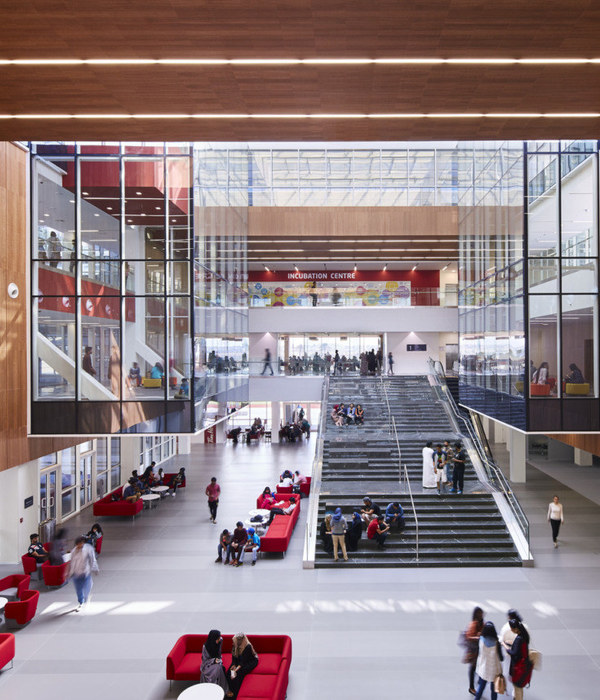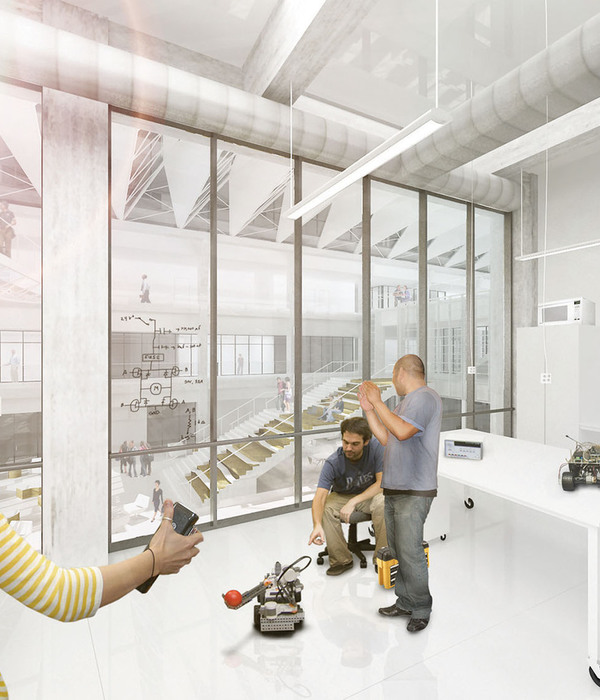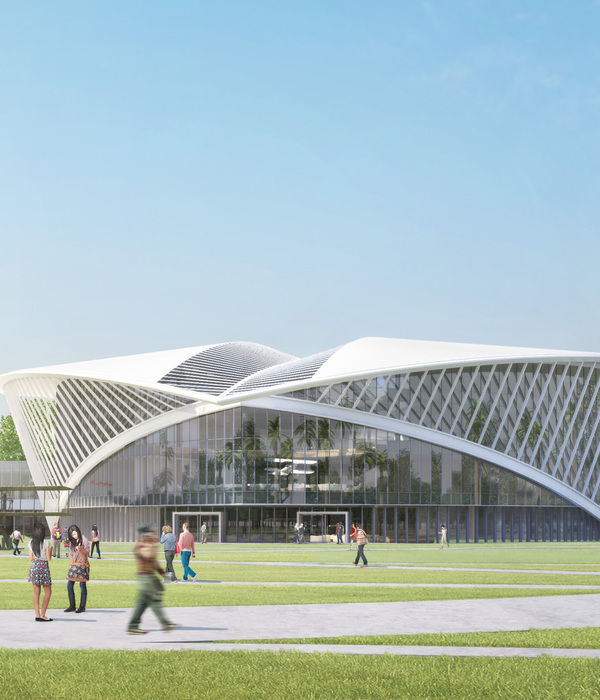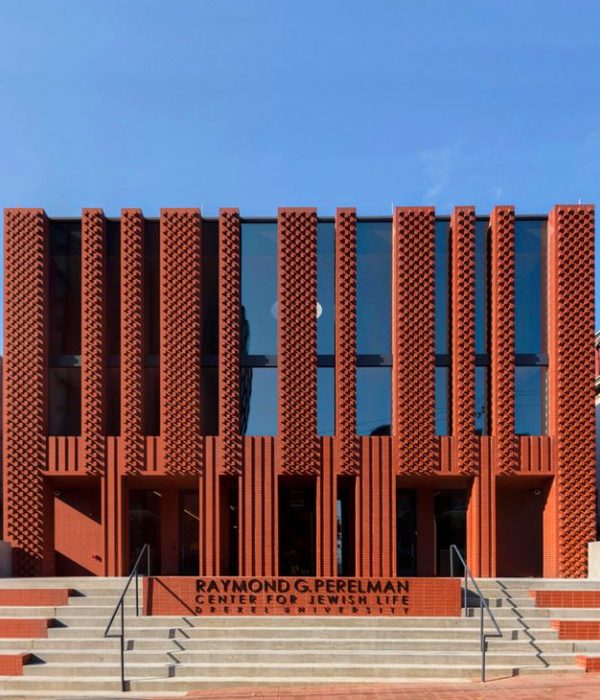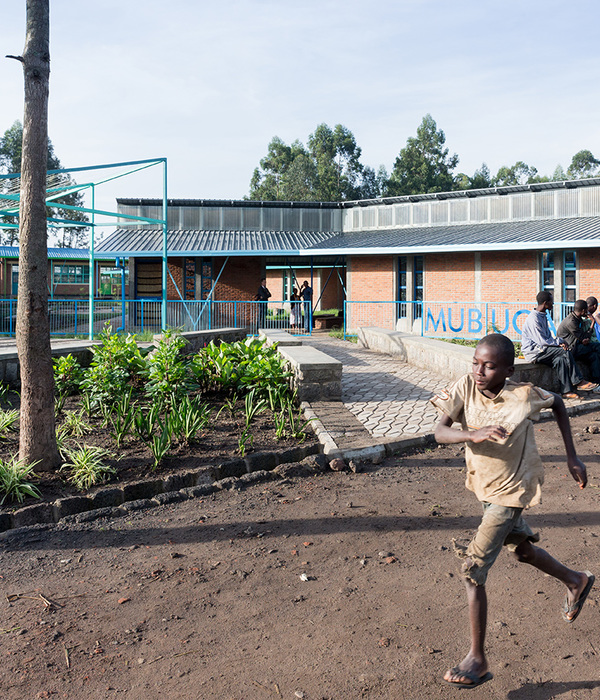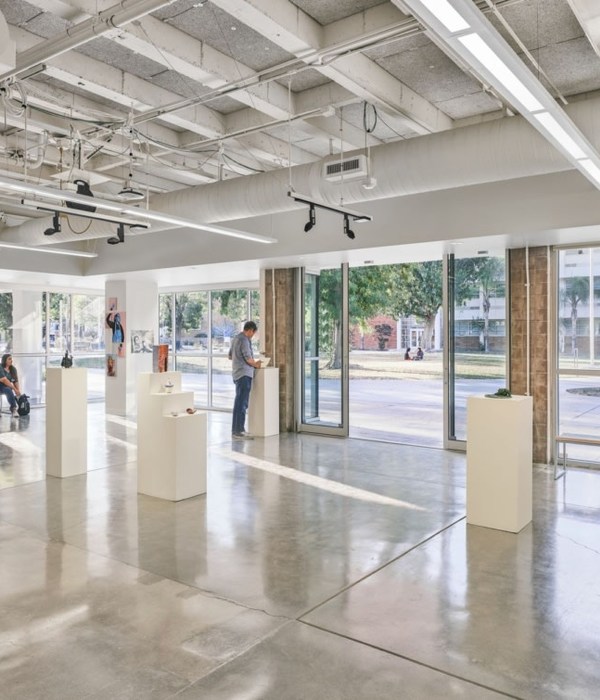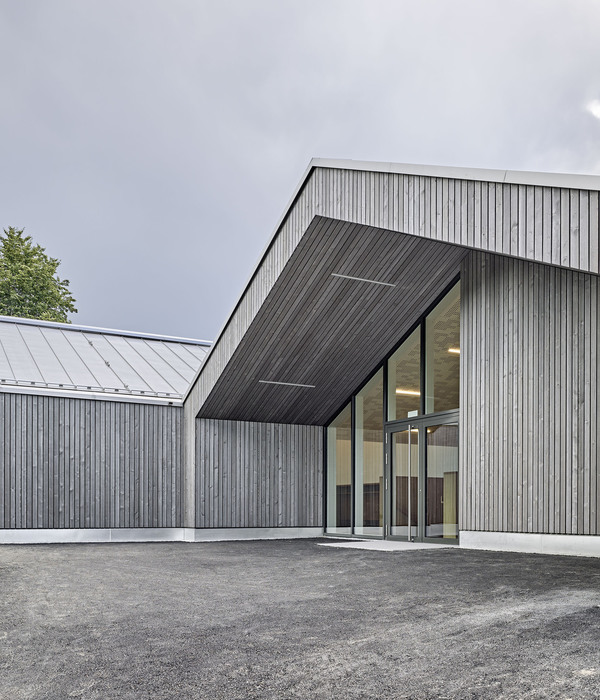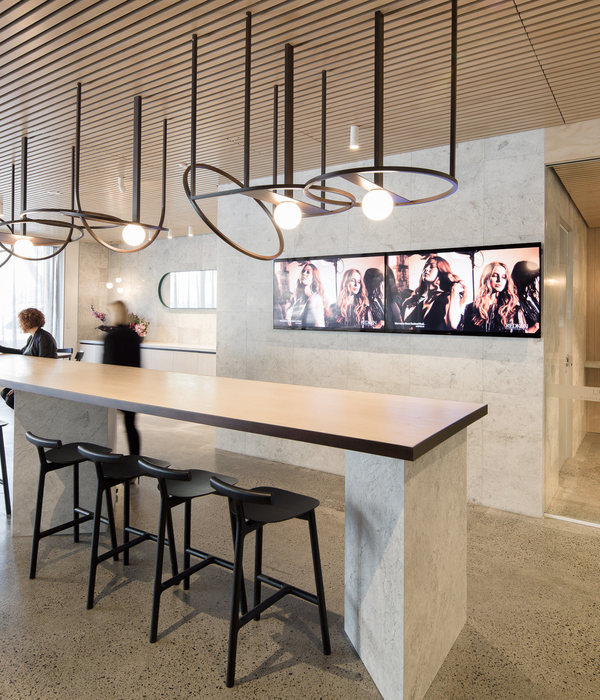- 项目名称:华东师范大学附属顺德美的学校(一期)
- 项目地点:广东省佛山市顺德区北滘镇
- 设计内容:建筑设计 室内设计 景观设计 结构设计 机电设计 BIM设计 弱电设计
- 建筑设计:睿住天元 方案综合创新所 土建综合所
- 室内设计:睿住天元 室内综合所
- 景观设计:睿住天元 景观设计所
- 业主单位:佛山市顺德区北滘镇教育办公室
- 设计面积:4.5万㎡
- 设计时间:2021年11月
- 建成时间:2022年08月
01项目概况
华东师范大学附属顺德美的学校(一期)作为顺德区人民政府与华东师范大学合作的首个公办项目,引进华东师范大学合作办学,致力打造成为当地义务教育标杆学校,为优化顺德教育公共服务进一步提供有力支撑。项目位于佛山市顺德区北滘镇环镇西路旁,总用地面积约3.06万㎡,总建筑面积约4.5万㎡,建设规模为小学部48个班。
East China Normal University Affiliated Shunde Midea School (Phase I) is the first public school project that signed between Shunde people's government and East China Normal University. The school aims to become the benchmark in compulsory education and provides strong support to the improvement of public education in the region. Located next to Huanzhen West Road, Beijiao Town, Shunde District, Foshan City, the project covers the total land area about 30,600 square meters, GFA about 45,000 square meters, and consists of a primary school of 48 classes.
建筑在设计上体现华东师范大学的名校附属办学理念和办学特点,结合佛山本土化的岭南建筑风格和细部,展示对当地人文气息的重视和人才培养。
The campus itself retains the establishment and cultural deposits of a renowned university, East China Normal University, and highlights the details of Lingnan architectures, which echoes the rich local cultural heritage.
设计的目标围绕着“生态”“人文”“艺术”三大主旨,把自然生态融入到教学楼、综合楼以及各个公共空间中,打造花园式的学习环境。创造出既符合校园建筑形式,又充满人文气息的园区氛围。
The design philosophy green, humane, and artistic is fully integrated with teaching buildings, comprehensive buildings and in every corner of the campus, we tend to make garden school happen.The campus design is both educational and humanist.
02建筑设计
通过对学校的各种功能需求、使用人群、活动方式进行深入分析研究,采用合理布局和建筑设计,打造满足教学多样性及可持续发展的绿色生态校园。
This campus design analyzes various functional requirements, users and activities, so as to meet the functional requirements of the school through reasonable layout and design, as well as to promote teaching diversity.
小学生在校自由时间有限,课间活动是儿童社会交往、环境学习、运动放松的重要途径。如何利用空间来满足学生的课间活动,成为我们在校园空间设计的重要议题。
As children have limited time to play after class, it’s important to create space that makes them feel comfortable when they are doing social activities, indoors and outdoors learning and sports. How to transform free time to free space is of overarching importance when we design campus.
小学涵盖了儿童成长变化显著的7至12岁阶段,针对不同年龄的活动特点差异性,我们在设计也做了不同的考虑。由于用地条件限制,以及教学班数较多导致总容量较大,设计需要考虑紧凑布局。建筑顺应场地风环境,设置贯通连廊与架空层,形成通风廊道。
In addition, children at the age of 7 to 12 in primary school have different needs for activities, which are also being taken consideration during our design.Site context restricts design, which leads to compact layout. We spacious corridors, connective structures and overhead buildings to allow breeze to come in.
首层设置有架空空间,将不同的庭院空间连接起来,方便室内外关系的渗透。二层结合合班教室、舞蹈室等屋面,架空走廊设置,连接运动场地,为低年级学生提供足够的戏耍空间。三四层在同层组织设置了大量的宽大连廊,方便场地在教室之间形成多个活动平台,适应高年级学生活动及兴趣学习的多样化选择。
The ground is designed with overhead floors, which connects the different types of courtyard space and facilitates indoors and outdoors people flow.On the second floor where classrooms and functional rooms are located, we design spacious corridors to guide students to the sport arena, and ensure they can have enough space to have fun.Site context restricts design, which leads to compact layout. We spacious corridors, connective structures and overhead buildings to allow breeze to come in.On the third and fourth floor, spacious connective structures with various platforms help students of higher grades organize activities and learning.
在顶层及首层均设有种植空间,屋顶农场、植物园地、户外教室、立体花架廊及农园小屋等,在有限的用地里,尽最大限度丰富学生们的课外学习场地。
On the rooftop, we provide space for students to plant vegetables and flowers. Although the floor area is limited, we still maximize their fun out of the classroom.
03教学空间
设计从学生的行动力、成长心态等方面着眼,为其定制符合其年龄特征的低龄、中龄和高龄等三组教学建筑。同时,以小学生的视角来组织空间,控制空间的尺度大小,注重幼儿的体验感受。
From the perspective of children's mobility and mentality, the design customizes three groups of teaching buildings, for young, middle and older kids, that conform to their age characteristics. At the same time, we organize the space from the perspective of primary school students, control the size of the space, and pay attention to the children's experience.
学生对空间的使用性是第一位,同时也要具有相应的活动空间,满足学生们对学习与生活全面的探索需求。
Students are the primary user of the school. Therefore, it's important to provide corresponding activity spaces to meet their comprehensive needs for study and life.
在空间材料中使用E0级的环保板材和实木板材,涂料上使用无机矿物环保涂料,保证孩子的安全与健康。
E0-grade environmentally friendly boards and solid wood boards are used in space materials, and inorganic minerals are used in paints to ensure the safety and health of children.
04绿色低碳
建筑围绕主动式、被动式设计技术,及场地内可再生能源的合理利用,采用节能减排措施,有效减少能源消耗,降低废弃物和碳排放强度。项目结合屋顶绿化、平台绿化、庭院绿化等多层次立体绿化,增加场地绿化率,为使用者营造良好微气候。
The campus employs active and passive design, and well utilizes the renewable energy within the site, through which greatly reduces the emission, waste and carbon and conserves the energy more effectively. Green campus is achieved through maximizing green space and improving microclimate. Roof greening, platform greening, courtyard greening and other multi-level three-dimensional greening is built to reduce heat.
项目采用场地土壤修复,减少对场地生态破坏,也避免土壤资源浪费;并在场地内种植大量本地植物和耐旱植物,既避免对本地植物群落造成入侵和破坏,也给未来生物提供栖息环境,从而提高场地内生物多样性。
The site focuses on soil remediation to reduce ecological damage to the site and avoid waste of soil resources. Native plants and drought-tolerant plants are introduced to provide proper habitat environment for insects and birds and enhance site biodiversity.
建筑针对夏热冬暖地区特性,采取多种立面遮阳及开窗模式,保证建筑通风散热;外窗均采用LOW-E中空双玻,有助保持室内热舒适性,减少暖通设备能耗,降低噪音干扰。在夏季典型工况下,室内人体热感觉中性,满足热湿环境要求。
The building responds to summer heat and winter warmth with manifold facade shades and ventilated windows. The outside windows adopt LOW-E double glazed unit, which can make indoor environment more comfortable and reduce energy consumption of HVAC and noises.In summer, people indoors tend to feel hot and humid. Therefore, the building design shall take humidity and heat into consideration.
05技术应用
利用物联网技术,实现智慧校园各类教室、校园网络、设备资产可视化呈现和统一管理。校园设置环境质量检测系统和控制终端显示平台,结合高精度测量单元,对环境中多项要素进行实时数据采集,主动感知周围环境并联动设备调节,以保障建筑高性能自适应性运行和智能化管理。
In the meanwhile, the IOT technology connects different types of classrooms and campus network, and unifies the fixed asset management.The campus is equipped with terminal display platform for environment quality testing system and control. Combined with high-precision measurement unit, real-time data collection of many elements in the environment, the system can actively perceive the surrounding environment and activate equipment adjustment to ensure high-performance adaptive operation and intelligent management of the building.
通过BIM正向设计与设计施工一体化应用,节省无效成本,提前发现并解决问题,有效缩短项目工期。
Through the integrated application of BIM forward design and design and construction, we have successfully saved invalid costs, identified and solved problems ahead of time, and effectively shortened the project construction .
结语
华东师范大学附属顺德美的学校(一期)项目,是睿住天元设计团队尝试从“低碳”走向“零碳”的一个技术应用探索,将向社会公开碳排放实时数据,及对多维度技术体系的应用情况进行科普展示。未来,我们将以科技支撑设计提升,建立低碳健康产学研用体系,不断完善多类型项目建设的零碳集成技术,助力低碳建筑产业落地,为实现“双碳”目标贡献力量。
This project exemplifies how we shift from low-carbon to zero-carbon, by disclosing real-time data on carbon emissions to the public and demonstrating the application of multi-dimensional technology systems.In the future, we will continue to utilize science and technology to support and improve the design, establish a low-carbon healthy industry-university-research system, improve the zero-carbon integration technology of various industries, facilitate the low-carbon construction industry, and finally contribute to the carbon peaking and carbon neutrality goal.
项目信息
项目名称:华东师范大学附属顺德美的学校(一期)
项目地点:广东省佛山市顺德区北滘镇
设计施工总承包:广东天元建筑设计有限公司(睿住天元)& 广东腾越建筑工程有限公司
设计内容:建筑设计 室内设计 景观设计 结构设计 机电设计 BIM设计 弱电设计
建筑设计:睿住天元 方案综合创新所 土建综合所
室内设计:睿住天元 室内综合所
景观设计:睿住天元 景观设计所
BIM设计:睿住天元 BIM研发 土建综合所
弱电设计:睿住天元 智能化创新所
业主单位:佛山市顺德区北滘镇教育办公室
设计面积:4.5万㎡
设计时间:2021年11月
建成时间:2022年08月
{{item.text_origin}}


